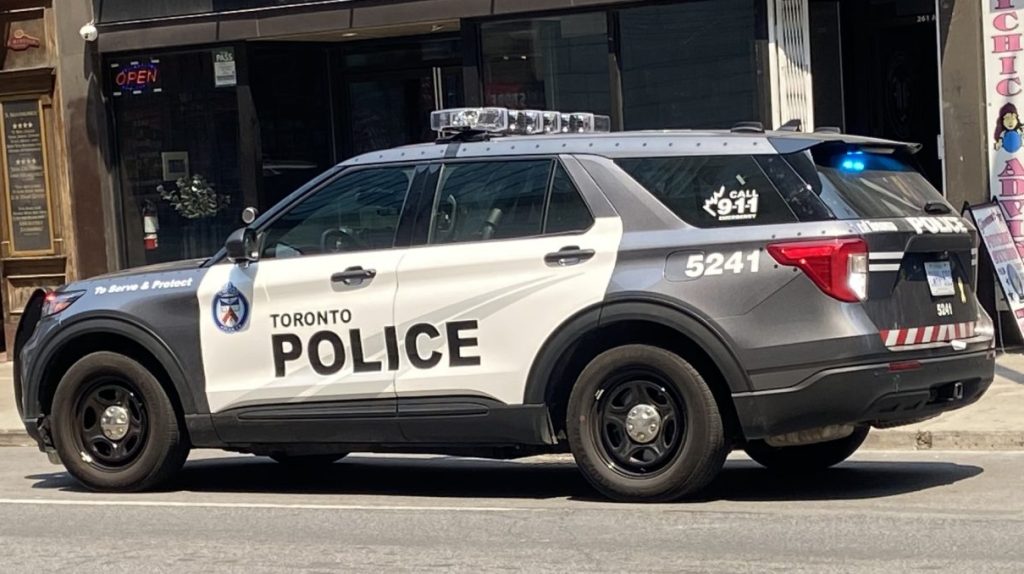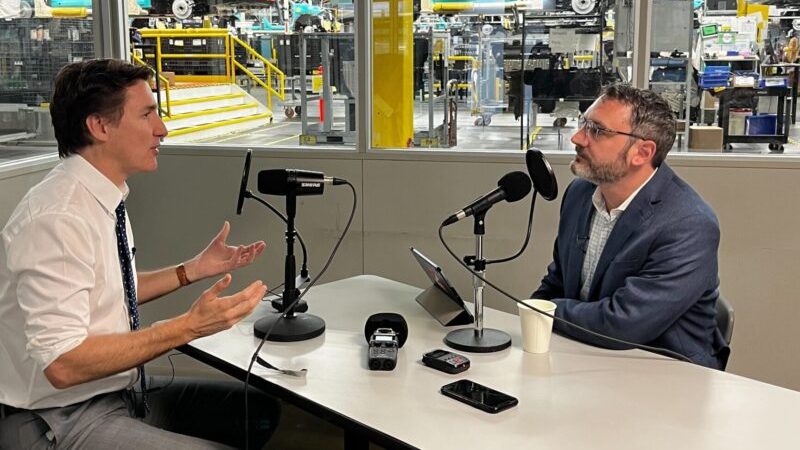People You Should Know: Yvonne Bambrick Of The Toronto Cyclists Union
Posted August 12, 2010 1:40 pm.
This article is more than 5 years old.
Meet Yvonne Bambrick, Director of Communications and Events for the Toronto Cyclists Union:
Yvonne Bambrick’s fascination with clean, two-wheel transportation started early.
The spokeswoman for the city’s cyclists said she “grew up on the back of my dad’s bike” in the Victoria Park and Danforth avenues area.
Her parents had matching Peugeots, she added.
After a brief stint as a driver during her undergrad years in Montreal – a necessity while working as a concert caterer and ski instructor – she reverted to pedal power while pursuing her master’s degree in Australia when she had to sell her car to pay for her studies.
“I made the switch back to bicycle and really have felt strongly about it ever since,” she said.
Bambrick is the director of communications and events for the Toronto Cyclists Union, which formed in 2008, and she’s become the go-to person for media seeking reaction from the cycling community. She was quoted widely during the fatal incident involving former Ontario attorney general Michael Bryant and bike courier Darcy Sheppard and has provided her input into the city’s bike lane initiatives.
“We’ve tried to be sort of a middle ground,” she said.
“There’s been so much media attention … and with that comes fairly high expectations for getting things done.”

Bambrick became active in the Toronto cycling community in 2003. At the time she was staying with friends in Cabbagetown and met Sean Weldrake, now a bicycle communications coordinator for the city of Toronto, at the Jet Fuel café.
Weldrake invited her to a cycling committee meeting and there she met people interested in creating a pedestrian zone in Kensington Market. Bambrick went on to become a key organizer of the popular Pedestrian Sundays there.
Later she got involved in discussions about starting up a cyclists union – a “pragmatic” group interested in working with all stakeholders.
“This Toronto Cyclists Union was really filling a gap in what we had here. We had small niche groups … but no city-wide group that gave voice to the transportation option of cycling,” she explained.
Bambrick spoke about the need for mutual respect on the roads and improving motorist-cyclist relations during the Bryant-Sheppard case. That sparked the Toronto Cyclists’ Union “Thank-you campaign” last year when cyclists handed out cards of appreciation to courteous motorists.
“It was quite a successful campaign, it was all pro bono, which was fantastic,” Bambrick said.
She represented Toronto at the Velo-City international cycling conference last month. More than 1,000 delegates attended the event that explores how bike transportation can improve quality of life by alleviating some overwhelming problems including traffic congestion, obesity and global warming.
She then made a stop in Paris to check out the city’s relatively new and extensive bike rental program, Velib.
The Bixi bike sharing program is slated to hit the streets of Toronto May 2011. At least 1,000 people must join the service by Nov. 30 to ensure the plan goes ahead.
While many urban cyclists’ main focus is trying to avoid being knocked over by a carelessly opened car door and falling on slippery streetcar tracks, Bambrick investigates the finer points of bicycles’ impact on urban living, from how they can alleviate pressure on the roads and public transit, to the many long-term and low-cost benefits of improving cycling infrastructure.
“We need to be looking at innovative ways of moving people and obviously Torontonians are starting to show cycling is an option for them,” she said. “It’s a pressure valve for the TTC, which takes much longer and more money to expand.”

Courtesy Toronto Cyclists Union
Making Toronto more bike friendly, Bambrick said, in most cases involves “just a little bit of paint.”
An apparent voting error may have put the kibosh on the barrier-protected segregated bike lanes plan on University Avenue, but yellow and white paint on Toronto roads has helped carve out safer spaces for cyclists to commute.
The bike lanes on Jarvis were completed in July. Sharrows — a double chevron Bambrick describes as “the next step down from a full bike lane” — continue to be painted on major downtown arterial roads. The city is also planning to more than quadruple the amount of bike lanes across Toronto.
Other projects are also being considered, including the implementation of “bike boxes”, which are holding areas for cyclists at stop lights. They will soon be tested at downtown intersections on Harbord and College streets.
“The investments required are so minimal,” Bambrick said. “Bike infrastructure is the cheapest thing going when it comes to adding capacity to our roadways to move people.”
The Jarvis bikes lanes cost the city approximately $65,000.
Cycling also generates cash, Bambrick said, citing a study (.pdf) conducted in Bloor West Village by the Toronto Coalition for Active Transportation. It found there were “misperceptions on the part of shopkeepers about how people are arriving at their stores,” she said.
“The majority of people that are shopping and who are spending the most money are arriving on foot or by bicycle.
“That’s the thing about riding a bicycle. If you’re not spending $8,000 to $10,000 a year on car payments, insurance, gas, tickets, parking, repairs, you’ve got more money to put into the local economy.”

She’d like to see Toronto take a cue from Montreal. The city has embraced segregated bike lanes and clears them in the winter.
“There’s no good reason Toronto can’t do the same,” she said. “There’s enough demand in the core.”
Bambrick rides an upright Dutch bike with a skirt guard and a front basket adorned with flowers.
“I’ve been living, breathing, sleeping and eating [cycling], literally,” she said of her role as the city’s cycling spokeswoman, noting she even had a bicycle shaped cake for her birthday.
Anyone you’d like to know? Send your suggestions here.
Previous:










